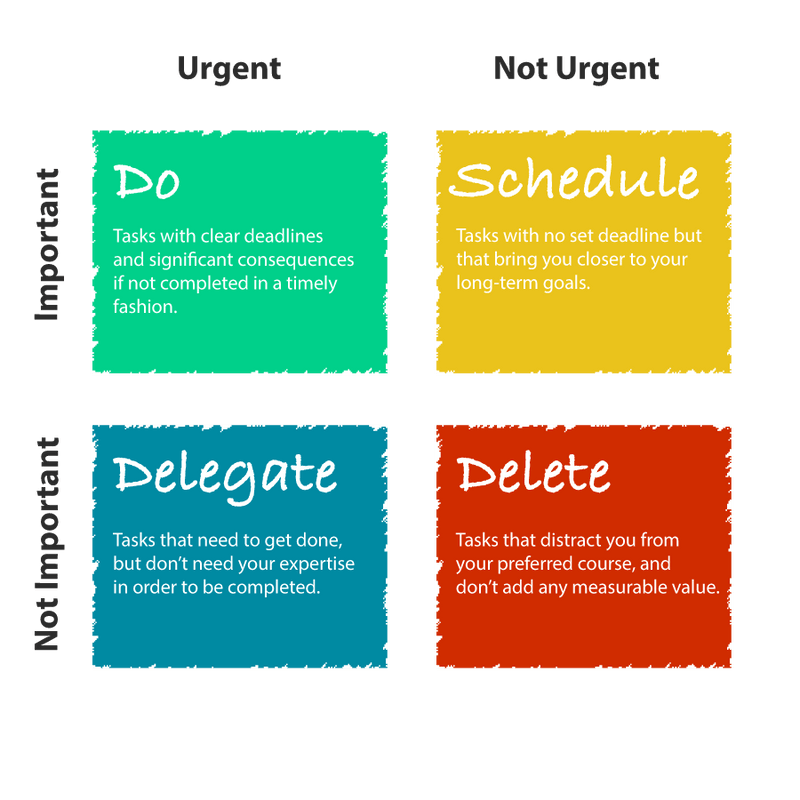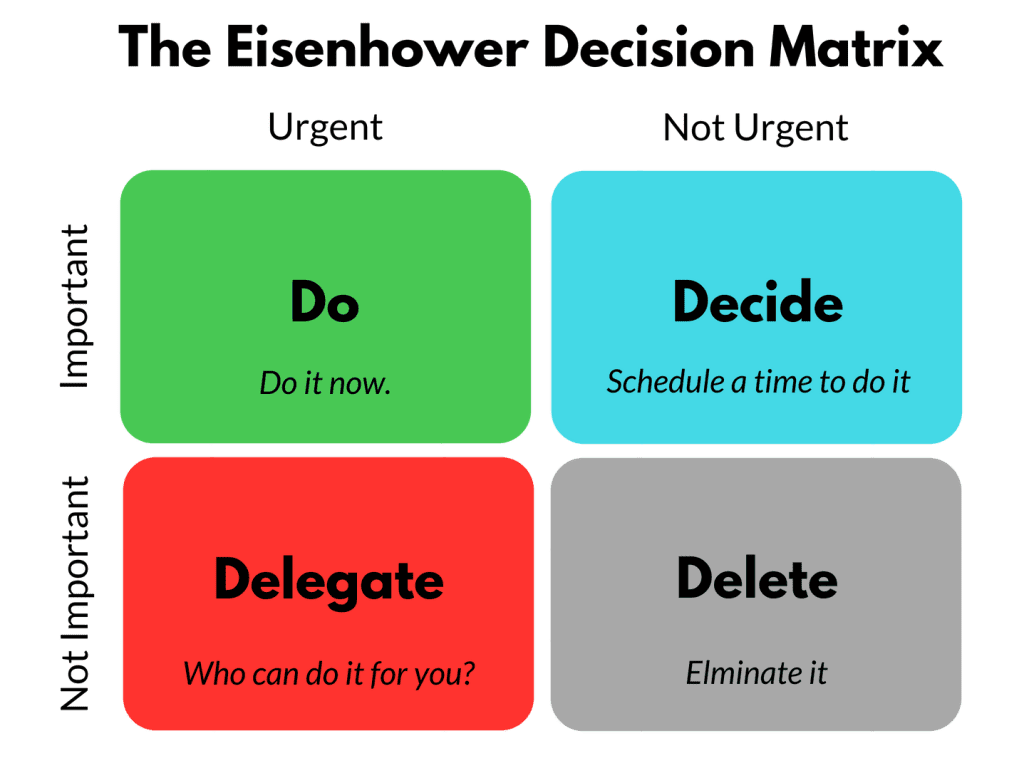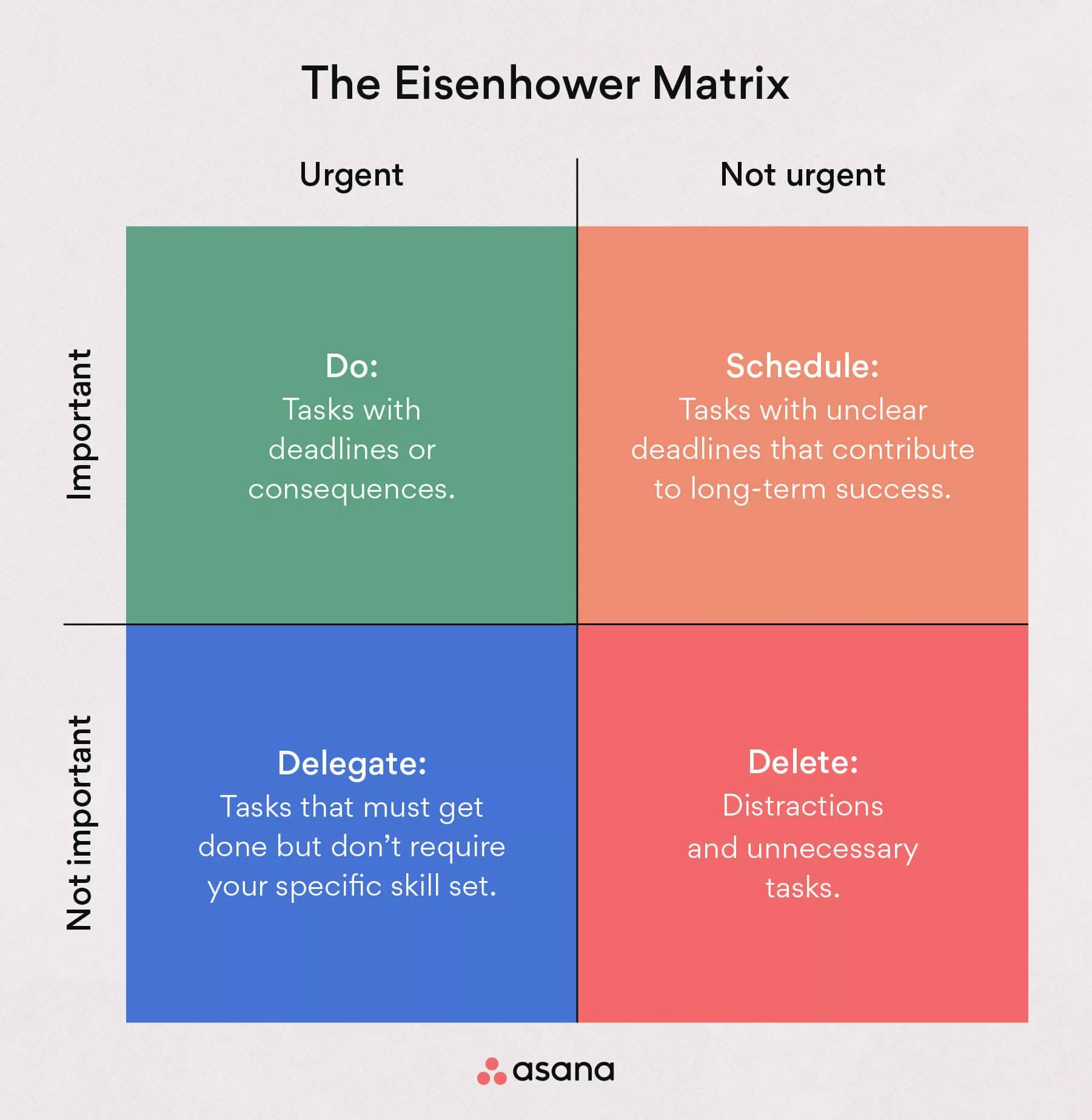The Eisenhower Matrix: The Ultimate Guide to Time Management and Prioritization
In today’s fast-paced world, managing time effectively is crucial for success—whether in the workplace, at home, or in your personal life. One of the most powerful tools for achieving this is the Eisenhower Matrix, a decision-making framework that helps you prioritize tasks based on urgency and importance.
Named after President Dwight D. Eisenhower, who was known for his productivity and ability to make difficult decisions, the Eisenhower Matrix provides a simple yet effective method for organizing tasks and staying focused on what truly matters.
In this article, we’ll explore the Eisenhower Matrix in detail, explaining its principles, how it works, and how you can use it to improve your time management and productivity.

What is the Eisenhower Matrix?
The Eisenhower Matrix, also known as the Urgent-Important Matrix, divides tasks into four categories based on two factors: urgency and importance. These categories help you determine what to focus on first, what to delegate, and what to eliminate from your to-do list altogether. The goal is to spend your time on the tasks that truly matter and avoid wasting time on activities that don’t contribute to your long-term goals.
The matrix is divided into four quadrants:
1. Urgent and Important (Do First)
These are tasks that are both urgent and important. They require immediate attention and should be handled right away. These are often tasks that have pressing deadlines or situations that demand your focus. Think of them as “firefighting” tasks that need to be dealt with immediately to avoid negative consequences.
Examples of tasks in this quadrant:
– Work deadlines
– Emergency situations
– Critical client meetings
– Health issues
2. Not Urgent but Important (Schedule)
Tasks in this quadrant are important but not necessarily urgent. These are the activities that contribute to your long-term goals and personal development, but they don’t have an immediate deadline. Instead of tackling them immediately, these tasks should be scheduled for later.
Examples of tasks in this quadrant:
– Planning for the future
– Career development
– Exercise and self-care
– Learning and skill-building
3. Urgent but Not Important (Delegate)
These tasks are urgent but not necessarily important. They often involve interruptions or requests from others that don’t contribute significantly to your long-term goals. These tasks can often be delegated to others if possible.
Examples of tasks in this quadrant:
– Interruptions at work
– Non-critical emails or phone calls
– Requests from colleagues that can be handled by others
– Minor administrative tasks
4. Not Urgent and Not Important (Eliminate)
Tasks in this quadrant are neither urgent nor important and should be eliminated. These are time-wasters or distractions that provide little value and should be avoided or minimized.
Examples of tasks in this quadrant:
– Unnecessary meetings
– Excessive social media scrolling
– Mindless TV watching
– Busywork that doesn’t move you closer to your goals
How to Use the Eisenhower Matrix
Step 1: List Your Tasks
Start by writing down all the tasks you need to complete. Be thorough and list everything, whether big or small. This includes work-related tasks, personal responsibilities, and even long-term goals.
Step 2: Categorize Tasks Based on Urgency and Importance
Once you have your list, categorize each task into one of the four quadrants of the Eisenhower Matrix. Consider the following when making your decisions:
- Urgency: Does the task need to be done immediately, or is there time to plan and schedule it?
- Importance: Does the task contribute to your long-term goals, or is it something that can be delegated or eliminated?
Step 3: Take Action
After categorizing your tasks, take action according to the quadrant they fall into:
- Quadrant 1 (Do First): Take care of these tasks immediately. These are the most critical and require your attention right away.
- Quadrant 2 (Schedule): These tasks are important, but they don’t need to be done immediately. Schedule them into your calendar and make time for them.
- Quadrant 3 (Delegate): If possible, delegate these tasks to others. If they can’t be delegated, minimize the time spent on them.
- Quadrant 4 (Eliminate): Eliminate or minimize time spent on these tasks. Avoid distractions and stay focused on what matters.
Step 4: Review Regularly
It’s important to regularly review your tasks and adjust your priorities. Over time, tasks and goals may change, so it’s essential to revisit the matrix to ensure you’re always focusing on the right activities.
Benefits of Using the Eisenhower Matrix
The Eisenhower Matrix is a highly effective tool for improving time management and productivity. Here are some key benefits of using the matrix:
1. Improved Focus
By organizing tasks based on urgency and importance, you can focus your energy on the activities that will have the most significant impact on your goals. This helps you avoid wasting time on unimportant tasks and distractions.
2. Better Decision-Making
The matrix helps you make more informed decisions about where to allocate your time and energy. It encourages you to assess the value of each task and prioritize accordingly, leading to better outcomes.
3. Reduced Stress
When you focus on the most important tasks and delegate or eliminate unnecessary ones, you reduce feelings of overwhelm and stress. You’ll feel more in control of your day and less reactive to every demand.
4. Increased Productivity
By prioritizing tasks effectively, you can accomplish more in less time. The matrix helps you stay on track and avoid getting bogged down by tasks that don’t align with your long-term goals.
5. Enhanced Time Management
The Eisenhower Matrix encourages you to be intentional with your time. Instead of reacting to whatever comes your way, you’ll proactively plan your day and stay focused on what matters most.
Example of the Eisenhower Matrix in Action
Let’s take a look at an example of how the Eisenhower Matrix might look in a professional setting:
| Task | Urgent | Important | Quadrant |
|---|---|---|---|
| Submit quarterly report to manager | Yes | Yes | Do First |
| Plan team-building event for next quarter | No | Yes | Schedule |
| Respond to non-urgent client emails | Yes | No | Delegate |
| Watch TV show for relaxation | No | No | Eliminate |
By categorizing tasks in this way, you can ensure that you’re focusing on what truly matters and avoiding distractions.

Frequently Asked Questions (FAQs)
1. What’s the difference between urgency and importance in the Eisenhower Matrix?
Urgency refers to how soon a task needs to be completed. Importance, on the other hand, refers to how much the task contributes to your long-term goals or well-being. A task can be urgent but not important, or important but not urgent.
2. Can the Eisenhower Matrix be applied to personal life as well?
Yes! The Eisenhower Matrix is just as effective for managing personal tasks and responsibilities as it is for work. You can use it to prioritize everything from exercise and social activities to household chores and personal projects.
3. How often should I review the Eisenhower Matrix?
It’s a good idea to review your matrix at least once a week. This ensures you’re staying on top of your tasks and adjusting your priorities as needed.
4. Can I use the Eisenhower Matrix in a team setting?
Absolutely. The Eisenhower Matrix is a great tool for teams to use in project management. It helps everyone focus on what’s important and ensures that time and resources are spent effectively.
5. What tools can I use to implement the Eisenhower Matrix?
You can implement the Eisenhower Matrix with pen and paper, a simple spreadsheet, or project management tools like Trello, Asana, or Notion. Many of these tools offer customizable boards that allow you to create your own matrix.
Conclusion
The Eisenhower Matrix is a powerful tool for anyone looking to improve their time management and productivity. By categorizing tasks based on urgency and importance, you can make better decisions about how to allocate your time and avoid feeling overwhelmed. Start using the matrix today and experience the benefits of improved focus, reduced stress, and increased productivity.
With regular use, the Eisenhower Matrix will become an essential part of your decision-making process, helping you prioritize what matters most in both your professional and personal life.


